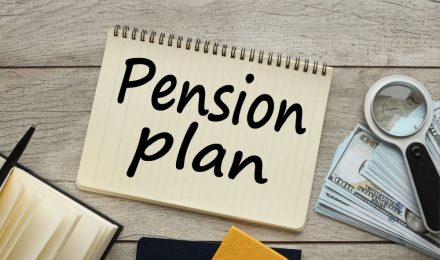Since the COVID-19 crisis first touched down in December 2019, the shock waves rippling through the world economy put many businesses in fear of survival. Global shutdowns happened across the world in places like the United States, China, Philippines and Taiwan. During this time, all businesses except the essential ones lost the right to operate. One study learned how 7.5 million businesses had a risk of bankruptcy.
Strong Bounce Back
The global economy has delivered a strong recovery from its initial collapse back in Spring 2020. Some data looks favorably on the lifting of the lock down measures as early gains become evident. Most economic experts believe that the gains from the re-opening will act as a short-lived rush. People can see a strong initial bounce back, but the overall outlook seems grim. In most of the developed countries, an immediate return to the old normal won’t happen for months or possibly even years.
The Most Strongly Impacted Sectors
Going into a movie theater right now takes a huge risk of contracting the virus. Any of the sectors where people go out and about with other people have suffered greatly from the coronavirus. The coronavirus has brought the travel, entertainment and airline sectors to their knees.
Living in Uncertain Times
Before the coronavirus arrived, the world economic predictions looked optimistic. After the outbreak occurred in Wuhan, China, it quickly turned into a pandemic that made rippling waves around the world. Businesses fought in the onslaught as governments shut them down, and they were left with no life jacket to keep them afloat. In the third quarter of 2020, people can expect a modest expansion. Companies and employees will be in the process of adjusting to the new norm. Without certainty that a vaccine will kill the virus, society continues to exist in a type of limbo. They don’t know when the world economy will fully return.
What Could Slow the Recovery
The economy could witness another slowdown if it must return to a state of lockdown. Provided major economies remain open and free, the world economy will progress on a positive trajectory. People shouldn’t expect a spectacular rebound, however, because the coronavirus will remain ominously in the background throughout 2020. Most economists believe that the British economy won’t return until 2022 at the minimum, and the United States walks a similar path, as do many other developed nations.
What Impacts the Economy
Whether consumers spend their hard-earned dollars at businesses or not will have an impact on the state of the world economy. Furthermore, government legislation that only panders to allowing big corporations to open will have a hugely negative impact on small business owners. The COVID-19 pandemic has exposed many inequalities that lurked beneath the surface of society. For example, when the coronavirus had its peak within the United States, medical care woefully neglected Black and Brown people, while white people received far more adequate medical attention.
Largest Decline Since Records of It Began in 1998
When looking at the Group of 20 leading economies, they learned how a 3.4 percent decline in the first three months of the year was the largest since records of it began in 1998. A drop in the second quarter put it on track with the worst since World War II ended. Many times, people think of World War II as restarting the economy in the United States, but they didn’t come out of World War II with a thundering economy. Its prosperity and growth unfolded slowly over the course of 15 years.
Economic Shock Three Times Worse Than 2008 Financial Crisis
The economic fallout that occurred because of COVID-19 was disastrous. President Donald Trump signed the largest bailout in the history of the United States at $2 trillion in coronavirus funds. Economists have warned how no such thing as a free lunch exists, and the United States will have to take the time to recover from those losses. Still, the worst of the COVID-19 pandemic could be behind us, which means that it will continue on a path of continued growth.
Economic experts listed the COVID-19 pandemic as three times worse than the 2008 Financial Crisis of the United States. Worse than the 2008 Financial Crisis, but it wasn’t as bad as the Depression of the 1930s. During the 1930s, 25 percent of people in the United States had no jobs. The COVID-19 pandemic was nothing to laugh at, but the unemployment rate sat at 13 percent.
Deep but Mercifully Short Recession
Most economists say that COVID-19 plunged us into a deep, but a mercifully short recession. Everyone suffered economic harm. The fear and uncertainty of the lockdowns have wreaked havoc on the world economy. Even some of the countries that largely escaped the harm of COVID-19, like Sweden, still suffered economic losses. The losses in Sweden were quite severe like anywhere else, and their economy shrank 8.6 percent from April to June. What makes Sweden an interesting case study is how they implemented zero lockdown measures and fared better than other EU countries with tighter measures under the claw of the pandemic.
Why the World Economy Remains in Limbo
The world economy remains in limbo because no vaccine to coronavirus exists as of right now. It will continue to flare up again and again, which could mean lock down measures once more. In addition, while the coronavirus has largely declined across the world, countries like India and Brazil see a continued climb of cases. The United States hasn’t seen a rising number of cases, but the cases remain steady.
The world does have reason to act optimistically. Across the globe, healthcare systems have improved and prepared for the next round. No one should mistake this as the end round of the fight. We still have to remain vigilant. Until the COVID-19 pandemic ends with a vaccine, the world economy will continue to bleed. Without a vaccine for the virus, no one knows how long the pandemic will last.
Since the COVID-19 crisis first touched down in December 2019, the shock waves rippling through the world economy put many businesses in fear of survival. Global shutdowns happened across the world in places like the United States, China, Philippines and Taiwan. During this time, all businesses except the essential ones lost the right to operate. One study learned how 7.5 million businesses had a risk of bankruptcy.
Strong Bounce Back
The global economy has delivered a strong recovery from its initial collapse back in Spring 2020. Some data looks favorably on the lifting of the lock down measures as early gains become evident. Most economic experts believe that the gains from the re-opening will act as a short-lived rush. People can see a strong initial bounce back, but the overall outlook seems grim. In most of the developed countries, an immediate return to the old normal won’t happen for months or possibly even years.
The Most Strongly Impacted Sectors
Going into a movie theater right now takes a huge risk of contracting the virus. Any of the sectors where people go out and about with other people have suffered greatly from the coronavirus. The coronavirus has brought the travel, entertainment and airline sectors to their knees.
Living in Uncertain Times
Before the coronavirus arrived, the world economic predictions looked optimistic. After the outbreak occurred in Wuhan, China, it quickly turned into a pandemic that made rippling waves around the world. Businesses fought in the onslaught as governments shut them down, and they were left with no life jacket to keep them afloat. In the third quarter of 2020, people can expect a modest expansion. Companies and employees will be in the process of adjusting to the new norm. Without certainty that a vaccine will kill the virus, society continues to exist in a type of limbo. They don’t know when the world economy will fully return.
What Could Slow the Recovery
The economy could witness another slowdown if it must return to a state of lockdown. Provided major economies remain open and free, the world economy will progress on a positive trajectory. People shouldn’t expect a spectacular rebound, however, because the coronavirus will remain ominously in the background throughout 2020. Most economists believe that the British economy won’t return until 2022 at the minimum, and the United States walks a similar path, as do many other developed nations.
What Impacts the Economy
Whether consumers spend their hard-earned dollars at businesses or not will have an impact on the state of the world economy. Furthermore, government legislation that only panders to allowing big corporations to open will have a hugely negative impact on small business owners. The COVID-19 pandemic has exposed many inequalities that lurked beneath the surface of society. For example, when the coronavirus had its peak within the United States, medical care woefully neglected Black and Brown people, while white people received far more adequate medical attention.
Largest Decline Since Records of It Began in 1998
When looking at the Group of 20 leading economies, they learned how a 3.4 percent decline in the first three months of the year was the largest since records of it began in 1998. A drop in the second quarter put it on track with the worst since World War II ended. Many times, people think of World War II as restarting the economy in the United States, but they didn’t come out of World War II with a thundering economy. Its prosperity and growth unfolded slowly over the course of 15 years.
Economic Shock Three Times Worse Than 2008 Financial Crisis
The economic fallout that occurred because of COVID-19 was disastrous. President Donald Trump signed the largest bailout in the history of the United States at $2 trillion in coronavirus funds. Economists have warned how no such thing as a free lunch exists, and the United States will have to take the time to recover from those losses. Still, the worst of the COVID-19 pandemic could be behind us, which means that it will continue on a path of continued growth.
Economic experts listed the COVID-19 pandemic as three times worse than the 2008 Financial Crisis of the United States. Worse than the 2008 Financial Crisis, but it wasn’t as bad as the Depression of the 1930s. During the 1930s, 25 percent of people in the United States had no jobs. The COVID-19 pandemic was nothing to laugh at, but the unemployment rate sat at 13 percent.
Deep but Mercifully Short Recession
Most economists say that COVID-19 plunged us into a deep, but a mercifully short recession. Everyone suffered economic harm. The fear and uncertainty of the lockdowns have wreaked havoc on the world economy. Even some of the countries that largely escaped the harm of COVID-19, like Sweden, still suffered economic losses. The losses in Sweden were quite severe like anywhere else, and their economy shrank 8.6 percent from April to June. What makes Sweden an interesting case study is how they implemented zero lockdown measures and fared better than other EU countries with tighter measures under the claw of the pandemic.
Why the World Economy Remains in Limbo
The world economy remains in limbo because no vaccine to coronavirus exists as of right now. It will continue to flare up again and again, which could mean lock down measures once more. In addition, while the coronavirus has largely declined across the world, countries like India and Brazil see a continued climb of cases. The United States hasn’t seen a rising number of cases, but the cases remain steady.
The world does have reason to act optimistically. Across the globe, healthcare systems have improved and prepared for the next round. No one should mistake this as the end round of the fight. We still have to remain vigilant. Until the COVID-19 pandemic ends with a vaccine, the world economy will continue to bleed. Without a vaccine for the virus, no one knows how long the pandemic will last.



